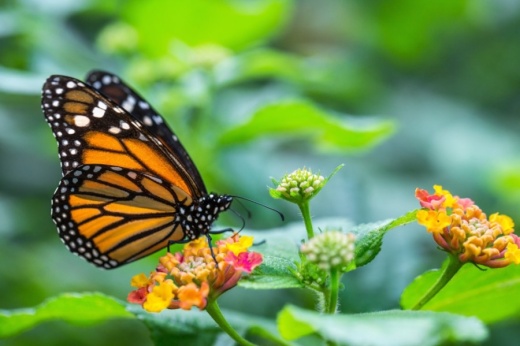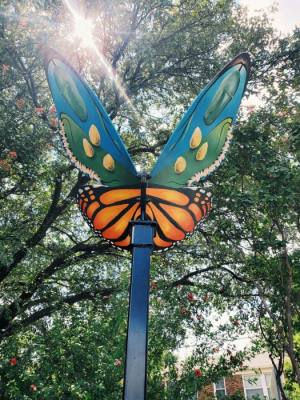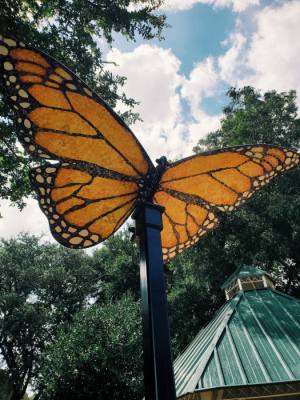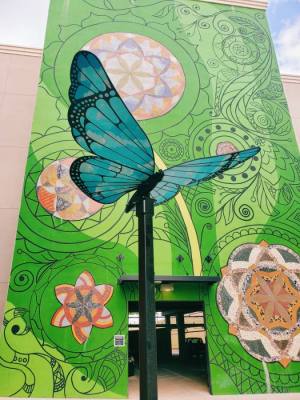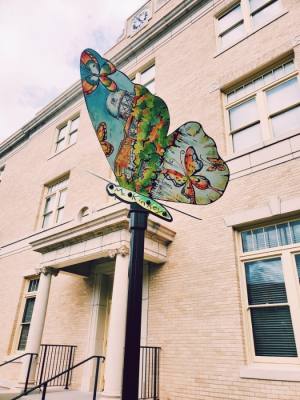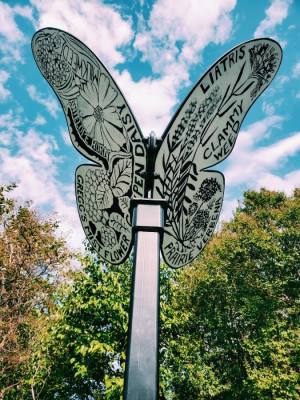Martha Cavazos Fipps, the city environmental education and community outreach coordinator, updated McKinney Community Development Corp. leaders Sept. 24 on the city’s outreach for monarch butterflies and their biannual migration across North America.
“They are an indicator species,” Cavazos Fipps said at the meeting. “When monarchs are doing well, it means we have a balanced ecosystem, and when they’re not doing well, it means we don’t.”
Fuller signed the pledge in February 2018 as part of an initiative through the National Wildlife Federation to create awareness on the monarchs’ plight, Cavazos Fipps said. The monarch population has seen an over 90% decline in the last 20 years, she said.
“I wouldn’t say they’re on the verge of being extinct, but that migration is about to collapse because they are in danger,” she said.
Factors contributing to the decline include urbanization and the increased use of pesticides and herbicides, Cavazos Fipps said.
The city committed to complete nine out of 25 action items from the initiative on an annual basis. One item involves increased communication efforts, which the city achieves through the McKinney Monarch Initiative brochure printed in English and Spanish.
“There’s no other brochure besides the recycling brochure that we’ve actually reprinted three times,” Cavazos Fipps said. “That shows the popularity of the program.”
A city website and a newsletter dedicated to monarchs provide additional resources, she said, and include a checklist for planting a monarch-friendly garden.
Educational seminars on monarchs hosted by the city reached an average attendance of 110 people pre-COVID-19, Cavazos Fipps said, with attendees from Melissa, Anna, Celina, Princeton, Allen and Frisco in addition to McKinney.
“We’ve seen a 42% increase in our seminars, and that’s all attributed to the butterfly program,” she said.
In downtown McKinney’s cultural district, eight oversized steel monarch butterfly sculptures by local artists have been installed. At the pole of each sculpture, Cavazos Fipps said the city plans to add a monarch fact and a QR code leading to the city’s website to learn more about the butterfly.
The National Wildlife Federation pledge also ask cities to host native plant sales. McKinney residents have had opportunities to purchase native plants through city partnerships with the Collin County Master Gardeners, the Heard Museum, the UPlantIt garden in a box program and an Adopt a Plant program.
Creating areas with native plants that are healthy for monarchs will foster the migration and combat threats to the butterfly, said Jaime Baxter-Slye, laboratory coordinator and adjunct lecturer at the University of North Texas’ ecology and environmental science undergraduate laboratories.
“It’s an island in a sea of urbanization,” she said. “If you put enough islands together, then that creates a network that not only butterflies but other wildlife can utilize.”
McKinney residents can help track the butterfly’s migration by tagging monarchs with a small sticker with a code, Cavazos Fipps said. Monarch tagging is facilitated by Monarch Watch, a nonprofit based at the University of Kansas that gathers information on where the butterflies travel.
“I’m getting a lot of feedback from families who say, ‘My kids are getting involved,’” Cavazos Fipps said. “You never know, this could plant the seed, and they could turn out to be a biologist.”
Based on the city's current efforts, Cavazos Fipps said McKinney is rated through the initiative as a “leadership circle,” but she wants to ramp up outreach in the future.
“The next step above the leadership circle is champion city,” Cavazos Fipps said. “Personally, my goal is to make McKinney the first champion city in Collin County.”
Residents can find more information about McKinney’s monarch initiatives at www.mckinneytexas.org/1913/mckinney-monarch-initiative.




